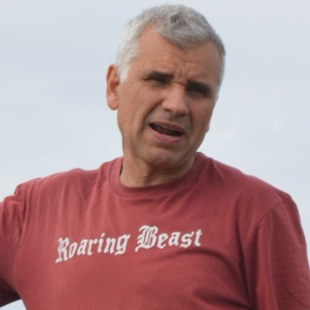Magmatic-Hydrothermal Ore Deposits
A special issue of Geosciences (ISSN 2076-3263). This special issue belongs to the section "Geochemistry".
Deadline for manuscript submissions: closed (30 September 2018) | Viewed by 57050
Special Issue Editors
Interests: ore deposits; porphyry-epithermal mineralization; mineralogy; geochemistry; fluid inclusions
Special Issues, Collections and Topics in MDPI journals
Interests: ore minerals; critical metals; magmatic-hydrothermal ore deposits; mineralogy of hydrothermal alterations in porphyry-epithermal systems; mineralogy and genesis of gemstones
Special Issues, Collections and Topics in MDPI journals
Special Issue Information
Dear Colleagues,
Magmatic-hydrothermal fluid circulation systems in the Earth’s crust are related with intermediate to felsic hydrous magmas, mainly at convergent plate margins, providing heat and mass transfer for the formation of ore deposits including base, precious and rare metals. Large hydrothermal deposits form also during periods of regional magmatism and tectonism, but are not strictly associated with any magmatic centers. Other hydrothermal deposits are hosted in sedimentary basins that lack temporally and spatially related magmatic activity. However, in many cases strong evidences demonstrate some association with magmatism.
Many factors are important for the formation of the magmatic-hydrothermal deposits, mainly the geotectonic environment, the regional structural control, the petrography and geochemistry of the magmatic and the neighboring rocks, the fluid composition, the hydrothermal alteration, the distribution, shape and size of ore bodies, the ore mineral paragenesis, textures and chemistry, and many others. These factors affect the exploration projects and the mining and metallurgical processes of the companies which invest considerable amount of capital to extract the metals from deep the Earths’ crust. They are based on the knowledge obtained from studies so far, and the models of ore formation, but further research on these types of mineralization are required.
This Special Issue welcomes contributions on original research which presents new data from magmatic-hydrothermal metallic mineral deposit systems, focusing mainly on the formation conditions and the relation with the geotectonic setting. Mineralogy, petrography, geochemistry, isotopic geochemistry, mineral chemistry and fluid inclusions are the most appropriate methods for this approach.
Assist. Prof. Vasilios MelfosAssoc. Prof. Panagiotis Voudouris
Guest Editors
Manuscript Submission Information
Manuscripts should be submitted online at www.mdpi.com by registering and logging in to this website. Once you are registered, click here to go to the submission form. Manuscripts can be submitted until the deadline. All submissions that pass pre-check are peer-reviewed. Accepted papers will be published continuously in the journal (as soon as accepted) and will be listed together on the special issue website. Research articles, review articles as well as short communications are invited. For planned papers, a title and short abstract (about 100 words) can be sent to the Editorial Office for announcement on this website.
Submitted manuscripts should not have been published previously, nor be under consideration for publication elsewhere (except conference proceedings papers). All manuscripts are thoroughly refereed through a single-blind peer-review process. A guide for authors and other relevant information for submission of manuscripts is available on the Instructions for Authors page. Geosciences is an international peer-reviewed open access monthly journal published by MDPI.
Please visit the Instructions for Authors page before submitting a manuscript. The Article Processing Charge (APC) for publication in this open access journal is 1800 CHF (Swiss Francs). Submitted papers should be well formatted and use good English. Authors may use MDPI's English editing service prior to publication or during author revisions.
Keywords
- Porphyry-epithermal mineralization
- Intrusion-related gold deposits
- Carbonate replacement and skarn deposits
- Hydrothermal fluids
- Ore mineral chemistry
- Fluid inclusions






